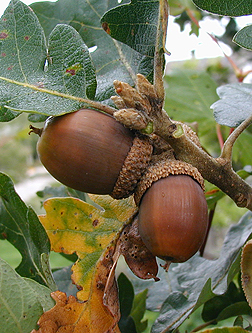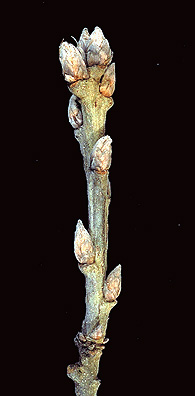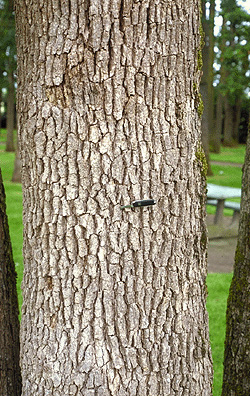Oregon white oak Fagaceae Quercus garryana
Leaf:Alternate, simple, deciduous, pinnately lobed with 5 to 9 irregular rounded lobes, lobes often touch or overlap, 3 to 6 inches long and 2 to 4 1/2 inches wide, dark green and shiny above and paler below, leathery but not persistent.
Flower:Species is monoecious; inconspicuous, male and female flowers borne in separate aments (catkins) on current year's twigs, male flowers borne in hanging catkins, female flowers borne in small clusters, appearing with the leaves.
Fruit:Solitary or paired acorns on current year's growth; about 1 inch long, light brown, cap is shallow and bowl-like, covering only about 1/3 of the nut, mature in a single season.
Twig:Stout, originally hairy but becoming smooth and reddish brown to gray; buds are densely hairy and are covered with imbricate scales, terminal buds are clustered.
Bark:Mature bark is thin (less than 1 inch), light gray to gray-brown, shallow irregular furrows separating short, broad ridges.
Form:A deciduous broad-leaved tree growing 40 to 80 feet tall and 2 to 3 feet in diameter (sometimes larger). In the open, it has a dense, rounded crown; when grown in stands, its crown is narrow and irregular.







Notes: